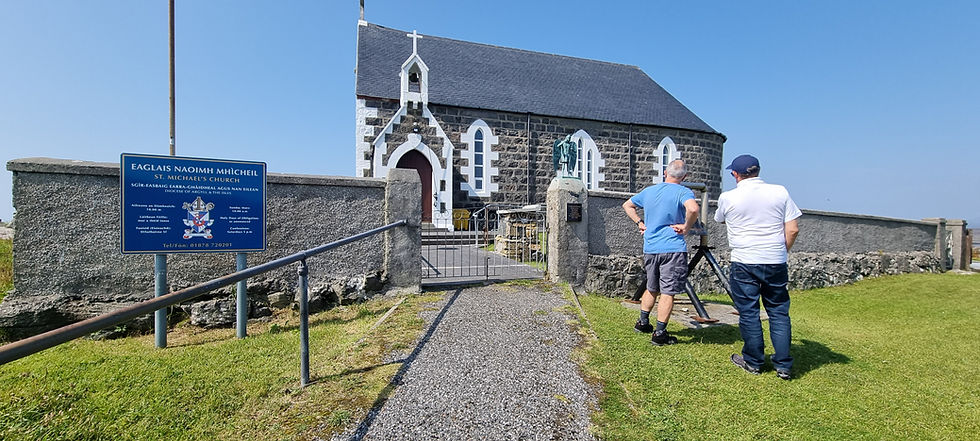When Learners Return, So Does the Gaelic Mass
- Sep 22
- 2 min read

For decades, many island churches have watched their pews slowly empty. Rural depopulation, generational shifts, and the wider decline of regular worship have all played a part. But there is another story unfolding quietly in the Outer Hebrides—one that suggests renewal might not only be possible, but rooted in the very language that shaped these communities.
The Learner Effect
Over the past few years, more Gaelic learners have been drawn to the islands. Some come for short immersion courses, others stay longer to deepen their understanding. What unites them is hunger for authenticity: they don’t just want to memorise vocabulary; they want to live the language.
That search leads naturally into the community’s living traditions—ceilidhs, crofting talk, stories told over tea, and yes, the Sunday service. A learner attending worship in Gaelic experiences the language not as a classroom exercise, but as living breath, wrapped in song, prayer, and rhythm of place.
Filling the Pews Again
When groups of learners attend church, they bring fresh energy. Congregations feel less fragile when visitors join in. Ministers or priests see their work valued anew. Islanders often express surprise and delight that outsiders have travelled far and invested time simply to hear and use Gaelic in worship. That recognition can spark pride, and sometimes even a willingness to reintroduce Gaelic elements that had quietly slipped away.
It’s not unusual now to hear about churches adding a Gaelic hymn, a blessing, or even a full Gaelic service when they know learners are present. Numbers matter in small parishes: ten extra voices can be the difference between keeping the doors open or closing them.
Why Gaelic Worship Matters
For learners, participating in a Gaelic Mass or service does more than strengthen their language skills. It connects them with a cultural heartbeat that textbooks can’t provide. For communities, it reaffirms that the language is not just heritage—it’s practice, prayer, daily life.
Reinstating Gaelic worship can also strengthen intergenerational ties. Elders, who may be more comfortable praying in Gaelic than English, find themselves leading by example. Younger locals, watching visitors take Gaelic seriously, sometimes rediscover interest in the language they grew up hearing but rarely used.
A Circle of Renewal
The pattern is simple but powerful:
More Love Gaelic learners travel to the islands.
They seek out authentic Gaelic spaces.
Churches respond by offering or reinstating Gaelic worship.
Communities feel valued, and the language gains ground.
It becomes a circle of renewal—where cultural tourism, faith practice, and language preservation all feed each other.
Looking Ahead
No one is pretending the challenges of rural ministry or Gaelic revitalisation will disappear overnight. But the evidence is clear: learners are not just passive students; they are active participants in cultural revival. Their presence can tip the balance in favour of keeping a service alive, a choir singing, a Gaelic Mass reinstated.
And perhaps that is the quiet miracle happening in these islands: strangers come to learn, and in doing so, they help communities remember the value of what they already hold.











